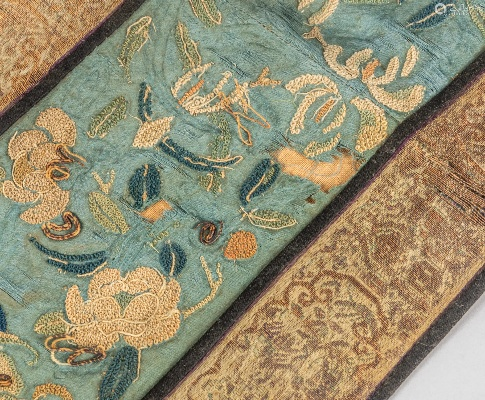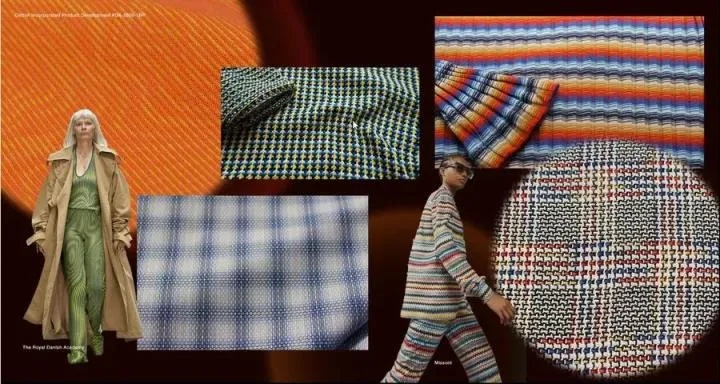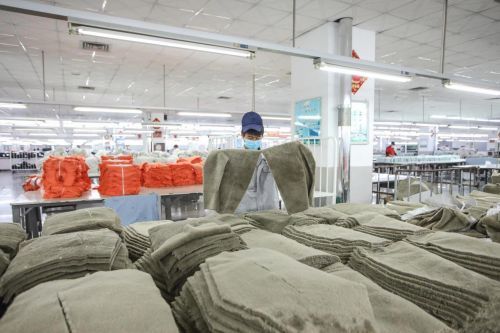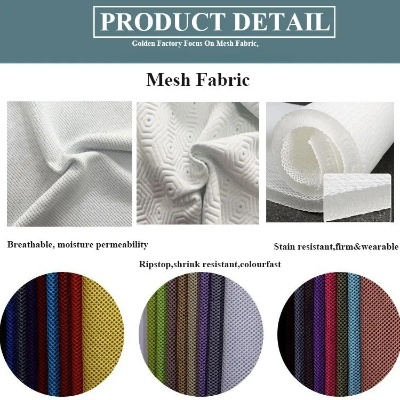The Characteristics of Chinese Textile Embroidery
Chinese textile embroidery, a traditional art form that has been passed down for thousands of years, is characterized by its intricate designs and delicate stitching techniques. Embroidery in China is often done on silk or cotton fabrics, using threads of various colors and patterns to create stunning patterns and designs. The process involves carefully selecting the thread, creating the design, and then embroidering it onto the fabric. Chinese embroidery is not only an art form but also a cultural symbol, representing the richness and beauty of Chinese culture. With the development of technology and globalization, Chinese textile embroidery has become more popular worldwide, attracting many people who are interested in this unique art form.
Introduction Textile embellishments, especially embroidery, are a hallmark of Chinese textile art. This intricate crafting process involves the use of threads and needles to create patterns on fabric, adding beauty and cultural significance to garments and home furnishings. In this essay, we will explore the distinctive features of Chinese textile embroidery, including its history, techniques, and aesthetic appeal.
Historical Background Chinese textile embroidery has a long history that dates back to ancient times. It was first used in the Han Dynasty (206 BCE-220 CE) as a means of expressing social status and wealth. Over time, embroidery evolved into a sophisticated art form that reflects the rich tapestry of Chinese culture. Today, it remains an integral part of Chinese traditional clothing and household decorations.
Techniques Chinese textile embroidery is characterized by its meticulous attention to detail and use of multiple colors. Here are some of the main techniques employed in creating these exquisite designs:

-
Hand Embroidery: This technique involves manually threading the needle with silk or cotton threads, which are then drawn through the fabric to create intricate patterns. Hand embroidery is often associated with high-end garments and luxurious items such as tablecloths and curtains.
-
Machine Embroidery: While hand embroidery is more commonly seen, machine embroidery is also an important technique in Chinese textile art. It involves using machines to stitch multiple threads onto a single piece of fabric, resulting in a more uniform and consistent pattern. Machine embroidery is commonly used for mass-produced items such as bed linens and towels.
-
Cross-Stitch: This technique involves crossing threads over each other to create a pattern on the fabric. Cross-stitch is often used for small details or borders on garments and accessories.
-
Silk Screen Printing: This technique involves printing patterns onto a silk screen and then transferring them onto fabric using a stencil. It produces vibrant and detailed prints that can be applied to various materials.
Aesthetic Appeal Chinese textile embroidery is not just about practicality; it is also deeply rooted in aesthetic principles. Here are some of the key elements that contribute to the beauty of Chinese embroidery:
-
Color Coordination: Chinese embroidery is known for its vibrant and harmonious color combinations. The use of complementary colors creates a sense of balance and harmony within the design.
-
Balance and Proportion: Chinese embroidery pays close attention to the balance and proportion of the design. The placement of motifs and elements is carefully considered to ensure that the overall composition is visually appealing.
-
Texture and Depth: Chinese embroidery is renowned for its texture and depth. The use of different types of threads and the subtlety of the stitches add depth to the design, making it appear three-dimensional.
-
Symbolism: Many Chinese textile embroidery designs carry symbolic meanings. These symbols are often related to nature, animals, and plants, reflecting the country's rich cultural heritage.
Case Study: Jadeite Embroidery One example of Chinese textile embroidery that showcases these characteristics is jadeite embroidery. Jadeite is a rare mineral found in China that is highly valued for its beauty and cultural significance. Embroiderers use jadeite to create intricate designs on garments, accessories, and home decor.
For example, a popular jadeite embroidery design is the "Snow Leopard" pattern. This design incorporates snow leopard motifs, which represent strength, courage, and grace. The snow leopard's spots are represented by small circles of jadeite, while the rest of the design is filled with delicate threads in shades of green and blue. The result is a stunning piece of artwork that captures the essence of the snow leopard while paying homage to China's cultural heritage.
Conclusion Chinese textile embroidery is a testament to the creativity and ingenuity of human beings. Its unique techniques, meticulous attention to detail, and deep cultural significance make it a cherished art form worldwide. By exploring the history, techniques, and aesthetic appeal of Chinese textile embroidery, we can gain a deeper appreciation for this fascinating aspect of Chinese culture.
中国纺织品以其丰富多彩的花纹图案闻名于世,这些花纹不仅体现了中国文化的独特魅力,也反映了中国纺织业的精湛工艺和卓越品质,本文将通过英文口语化的方式,详细介绍中国纺织品花纹的特点,并通过案例分析进一步说明。
中国纺织品花纹的特点

多样性
中国纺织品花纹种类繁多,包括刺绣花纹、织锦花纹、印花花纹等,每种花纹都有其独特的风格和特点,如刺绣花纹精细、图案丰富,织锦花纹注重图案的层次感和立体感,印花花纹则注重色彩的搭配和图案的清晰度。
图案设计
中国纺织品花纹的图案设计注重寓意和象征,常常融入吉祥、祝福、美好愿望等元素,牡丹花纹寓意富贵、华丽,莲花花纹寓意纯洁、高雅,中国纺织品花纹还注重对称、平衡、对比等构图原则,使得整个纺织品更加和谐、美观。
材料与工艺
中国纺织品采用多种材料制作,包括丝绸、麻布、棉布等,这些材料具有不同的质地和手感,使得纺织品的花纹呈现出不同的效果,中国纺织品的制作工艺也非常精湛,包括刺绣、织造、印花等工艺,使得纺织品具有很高的艺术价值和实用性。
案例分析
以丝绸为例,介绍中国丝绸花纹的特点和案例。
丝绸花纹的特点
丝绸是一种天然纤维材料,其花纹通常具有细腻、柔软、光泽度高等特点,在丝绸花纹中,常见的图案包括云纹、龙凤纹、花鸟纹等,这些图案不仅具有很高的艺术价值,还具有很高的实用价值,可以用于服装、家居装饰等领域。
案例分析
某品牌的一款丝绸连衣裙采用了独特的刺绣花纹设计,图案采用了云纹和牡丹花相结合的方式,寓意着吉祥、富贵和美丽,这款连衣裙不仅具有很高的艺术价值,还具有很好的透气性和舒适度,深受消费者喜爱。
中国纺织品花纹以其多样性、图案设计、材料与工艺等特点著称,在未来的发展中,中国纺织品将继续秉承传统工艺和现代设计的融合,不断提高产品质量和艺术水平,为全球消费者提供更多优质的产品和服务。
Articles related to the knowledge points of this article:
Comprehensive Analysis of Linchang Textile Logistics Route Prices
Technological Advances in Industrial Fabrication:A Comprehensive Review
The Story of Dongguan Qingjie Textiles
Exploring the Market for Sustainable Textile Recycling in Fuzhou



